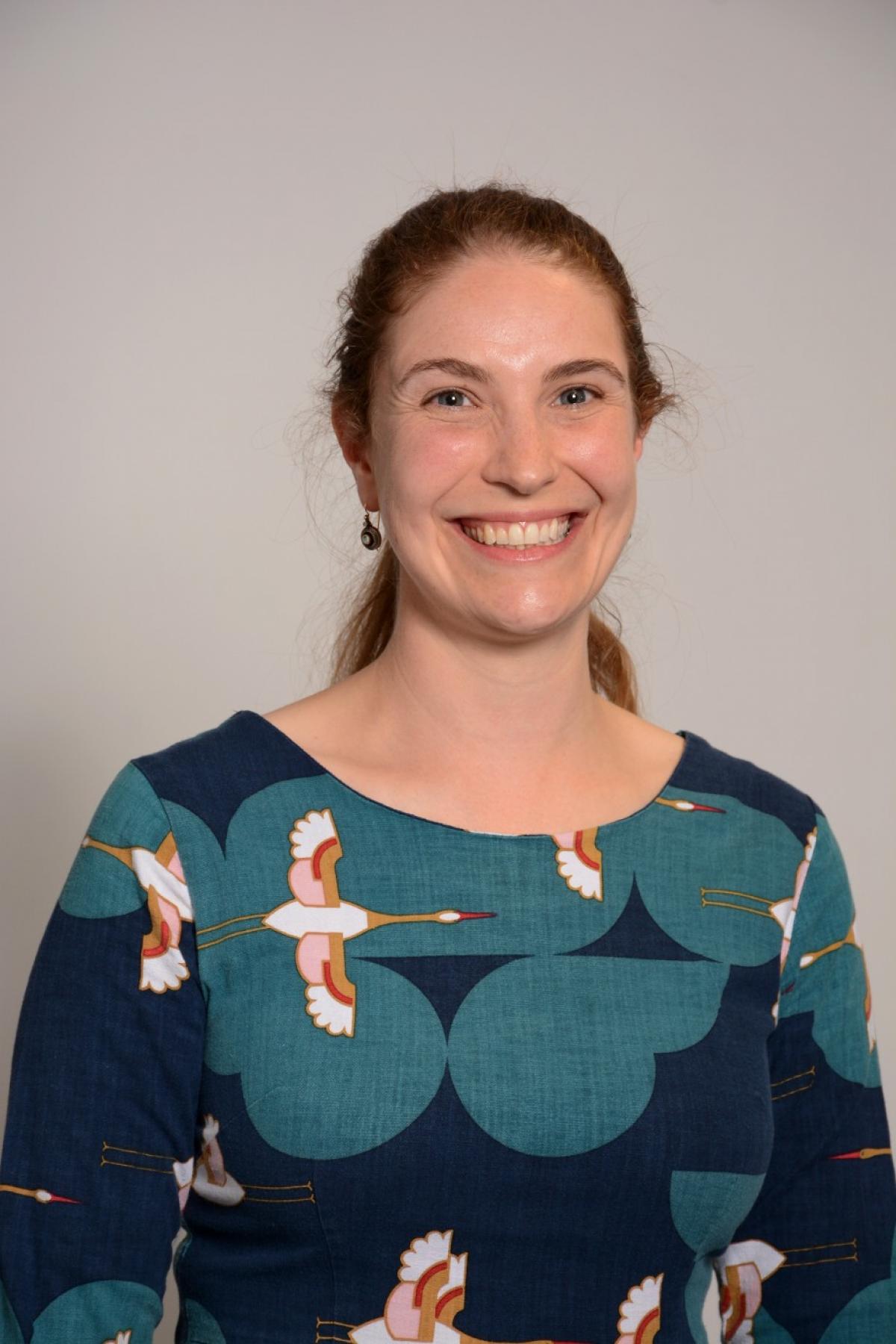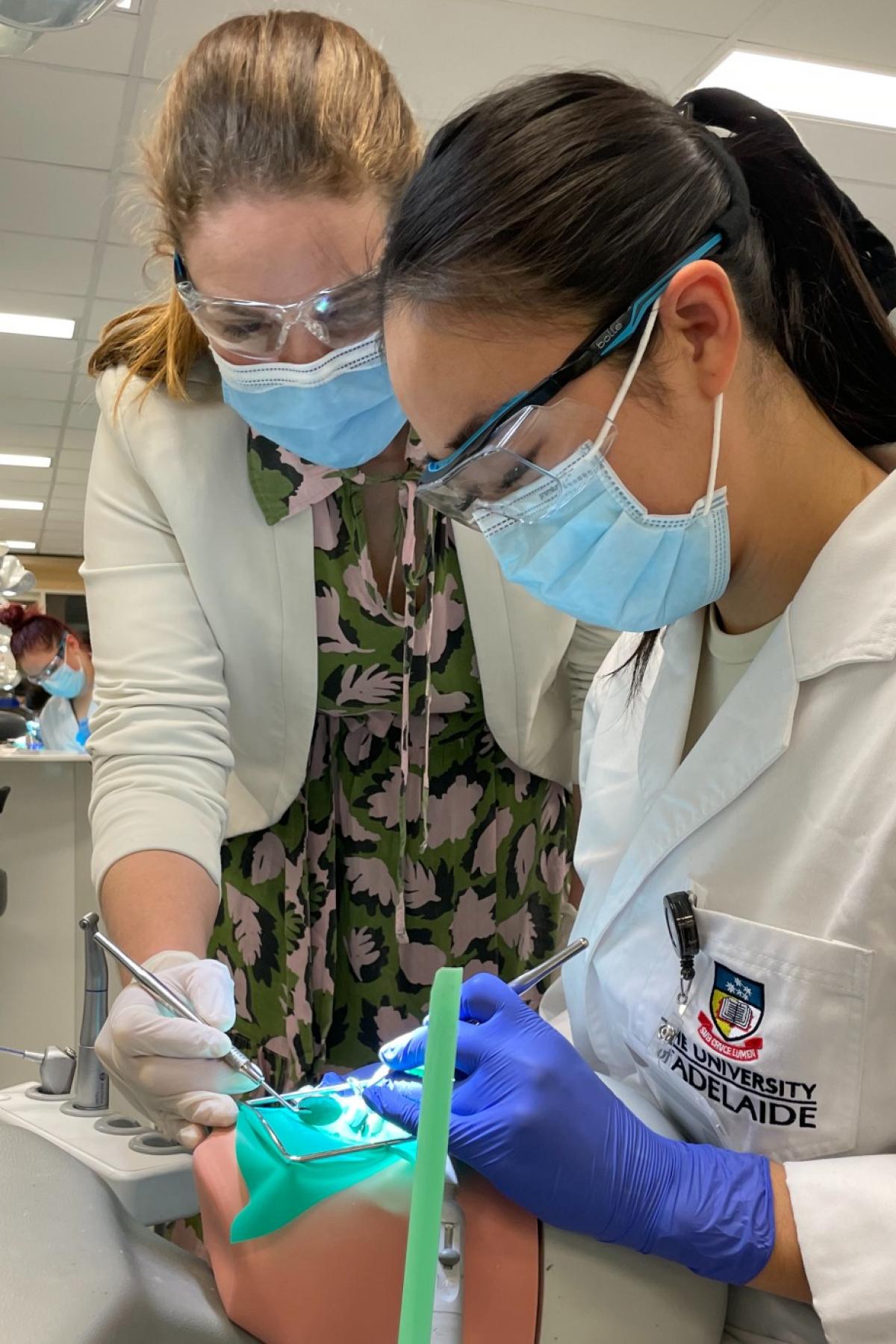This is how I teach
This month we spoke to Dr Poppy Anastassiadis, Senior Lecturer with the Adelaide Dental School. Read on to discover how Poppy creates a culture of peer support among her students, and how she uses technology to establish an effective cycle of evaluation and feedback in her classes.
Poppy’s reflective and evidence-based approach has resulted in her being awarded Senior Fellowship following participation in the AdvanceHE Fellowship Program of Support, offered to members of the University by the Teaching Excellence team.

Dr Poppy Anastassiadis
What do you like most about teaching in your discipline?
Teaching the future profession of dentists is a privilege, and I love the opportunity to be part of, and shape, in a small way, their ongoing journey. Surrounded by wonderful educators, researchers, and health advocates I can extend the focus on preventative, person-centered care.
At the heart, my teaching is driven by these truths:
- Oral health is integral to general health and wellbeing.
- Dental decay is a preventable disease.
- The burden of poor health is greatest on the disadvantaged and socially marginalised.
Teaching allows me to focus on the significance and impact of what we can and must do to address oral health in the community.
How would you describe your approach to teaching/your teaching philosophy?
My teaching practice:
- integrates content and founding cognitive principles
- creates opportunities to apply knowledge in an authentic, clinical environment
- offers practice opportunities with ongoing feedback mechanisms to build students’ self-evaluative practice
- cultivates compassionate and empathy
I engage students as peers and support their professional development and growing autonomy. I aim to do this by developing a culture where students are active players rather than receivers of information, their role in learning is critical. I encourage this by forming a genuine connection with students, supporting them through mentoring, and creating professional development and networking opportunities through my external engagement to support professional socialisation.
What is your favourite way to use technology to enhance learning?
I am conscious of the need to evaluate student understanding to ensure effective teaching and I am using technology to help address this key issue. Hinge points occur in my teaching when moving from one key concept to another and the teaching of the second concept is reliant on understanding the previous one. At this point, I ask a diagnostic question to find out what students know and don’t know. This sets up a cycle of evaluation and feedback and allows me to tailor and adapt my teaching to cater to student understanding. I find taking this approach engages students in teachable moments, ensures timely clarification of misunderstandings and develops a compassionate atmosphere where we can focus on advancing understanding.
I have set up online quiz questions (socrative.com) for this purpose, released weekly, which relate to the lecture content delivered and are explicitly linked to learning objectives. Questions stem from clinical scenarios, helping students apply their knowledge in context. To encourage engagement and contribution in this formative assessment, students anonymously participate and receive feedback to help guide the organisation of their response and highlight key concepts.
Building on this approach, I am now releasing online questions in face-to-face classes. Students log on and respond to questions online, I then project anonymous responses for all to review. This facilitates collective examination of understanding and will guide in-class discussion. In the past I have asked for students’ verbal responses to questions but found many were unsure, or unwilling, to share in person. Often the discussion fell flat or focused around a small number of confident students which reduced engagement and lost potential for collective understanding. Shifting to the use of online questions has seen students comfortably and safely engage. There is greater learning from each other and upon seeing other responses and shared questions a more robust discussion often ensues, building the confidence of all over time.

Dr Anastassiadis with student
How does your teaching help prepare students for their future?
I try to instil a curiosity to learn and willingness to explore the boundaries of what we know and what we are yet to understand. I encourage questions and share, with candour, my own journey, hoping this will allow others to explore and consider further possibilities.
My goal for dental students that is they become proactive, self-regulated learners who work towards optimum patient-centred care. I help students on this path by valuing their contribution, seeing them as partners, critical in the plan to pursue oral health for all.
I communicate kindness in the way I interact, the things I say and the way I say them. I share and extend these expectations to the way students and staff interact with each other, and their patients.
Advance HE Membership & Fellowship information session
The University of Adelaide is an Advance HE Access Member and this opens up exciting opportunities for academic and professional staff involved in teaching, supporting learning, and leading in higher education. Join this session to learn more about the member benefits and the support available for Fellowship applications.
Advance HE Fellowship acknowledges your expertise in, and commitment to, professionalism in learning and teaching and is recognised globally. Other membership benefits include opportunities to apply for funds and grants, a global networking platform, and access to learning and teaching resources.
This session will be facilitated by Melanie Brown, Manager, Teaching Excellence and will be held over Zoom.
DATE: Wednesday 28 September
TIME: 12.00 - 1.00pm
